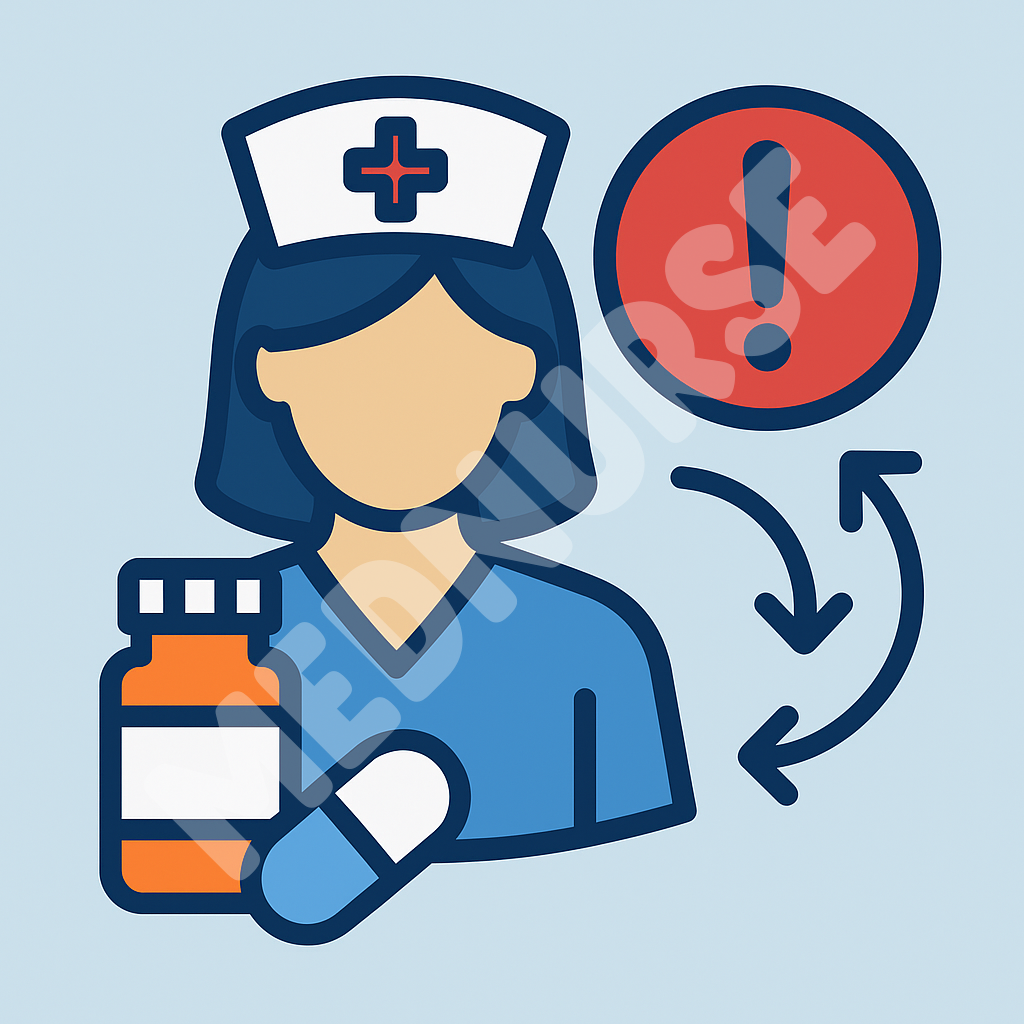News Details
- Home
- News Details

Responding to Medication Errors: A Five-Step Framework for Nursing Practice
Medication errorsremainone of the most significant risks in healthcare. Despite multiple safety checks and standardized processes, nursesoftenthe final safeguard before medication reaches thepatient,face the heavy responsibility of preventing harm. Errors can occur even in the most experienced hands, and when they do, the following steps are critical. A structured response not only protects patients but also reinforces a culture of safety. The following five-step framework offers practical and ethical guidance for nurses navigating this challenging situation.
Step 1: ImmediateActionAssessand Stabilize the Patient
Thepriorityis patient safety. When a medication error is discovered, nurses must go directly to the bedside to assess the patient’s vital signs and overall condition. Providers should be notifiedimmediately, with clear communication about the drug, dose, route, time, and patient response. Charge nurses or supervisors should be informed to mobilizeadditionalresources if necessary. Rapid clinical judgment at this stage can mitigate harm anddemonstratenursing accountability.
Step 2: Report the Error Through Proper Channels
Once the patient is stable, the error must be formally reported. Filing an incident (variance) report is a non-punitive step intended for risk management and system improvement (World Health Organization [WHO], 2016). Unlike documentation in the medical record, the incident report is confidential and designed toidentifysystem-level vulnerabilities such as look-alike medications or workflow interruptions. In alignment with aJust Culture, reporting is about learning and prevention, not punishment.
Step 3: Document Objectively in the Patient’s Chart
Accurate charting in the patient’s recordremainsa legal and clinical requirement. Documentation should include the medication administered, dose, route, and time; the patient’s response; the provider’s notification (including time and name); and any new orders given. Importantly, terms such as “medication error” or “incident report filed” should never be included in the chart (Tariq et al., 2023). Clear, factual charting reflects both transparency and professionalism whilemaintainingthe integrity of the medical record.
Step 4: The Crucial ConversationPatient Rights and Disclosure
Patients and families have both an ethical and legal right to be informed about their care. Disclosure conversations are typically led by the provider and nurse manager, with thenurse involvedpresent for support. Honesty, empathy, and an apology are essential. An apology is not an admission of liability but an acknowledgment of the patient’s experience (Wu, 2000). Cover-ups destroy trust; transparency builds it. This responsibility is supported by the American Nurses Association (2015)Code of Ethics, which underscores respect for autonomy and the patient’s right to make informed decisions.
Step 5: Self-Care and Professional Reflection
Medication errors can leave lasting emotional scars on healthcare professionals, often referred to as the “second victim” phenomenon (Agency for Healthcare Research and Quality [AHRQ], 2019). Nurses may experience guilt, anxiety, or depression. Seeking support from colleagues, managers, or employeeassistanceprograms is essential. Many institutions now offer second-victim support programs, such as Johns Hopkins’ RISE initiative. Participation in root cause analysisprovidesan opportunity for professional reflection and growth.Ultimately, forgivenessand self-compassion allow nurses to learn from mistakes without being defined by them.
Why These Steps Matter
1.5 million peopleare harmed by medication errors annually in the United States (Institute of Medicine [IOM], 2000).
The global cost of medication errors is estimated at$42 billionannually(WHO, 2016).
Between7,000 and 9,000 deathsoccur each year in the United States due to such errors (Tariq et al., 2023).
- Up to90% of healthcare providersinvolved in a serious error report significant psychological distress (AHRQ, 2019).
These statistics reveal not only the frequency and cost of errors but also the human toll—on patients, families, and providers alike.
Conclusion
Medication errors are both a systems issue and a profoundly human challenge. Nurses who respond with transparency, professionalism, and compassion protect their patients and themselves while contributing to a culture of learning and safety. By following this five-step framework—patient first, report, document,disclose, and reflect—nurses transform individual errors into collective lessons that strengthen practice and advance patient care.
References
Agency for Healthcare Research and Quality. (2019).Patient safety network: Second victims: Support for clinicians involved in medical errors.https://psnet.ahrq.gov/primer/second-victims-support-clinicians-involved-medical-errors
American Nurses Association. (2015).Code of Ethics for Nurses with Interpretive Statements. American Nurses Association.
Institute of Medicine. (2000).To err is human: Building a safer health system. National Academies Press.https://doi.org/10.17226/9728
Tariq, R. A., Vashisht, R., Sinha, A., &Scherbak, Y. (2023). Medication dispensing errors and prevention. InStatPearls.StatPearlsPublishing.
The Joint Commission. (2021).Sentinel event alert 61: Managing the risks of direct oral anticoagulants.https://www.jointcommission.org/resources/patient-safety-topics/sentinel-event/
World Health Organization. (2016).Medication without harm—Global patient safety challenge on medication safety.https://www.who.int/publications/i/item/WHO-HIS-SDS-2017.6
Wu, A. W. (2000). Medical error: The second victim.BMJ, 320(7237), 726–727.https://doi.org/10.1136/bmj.320.7237.726